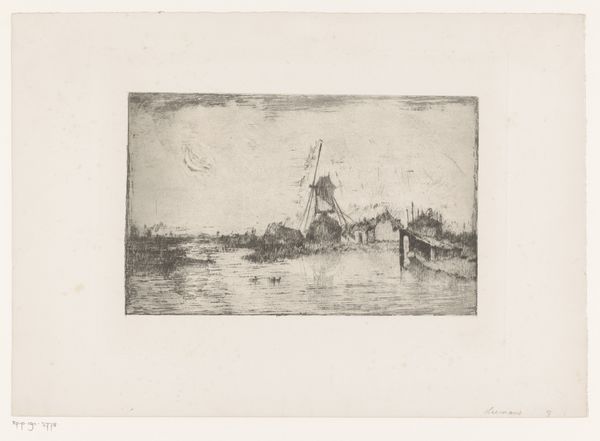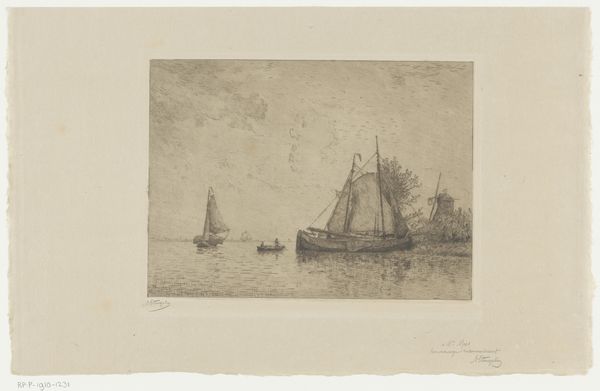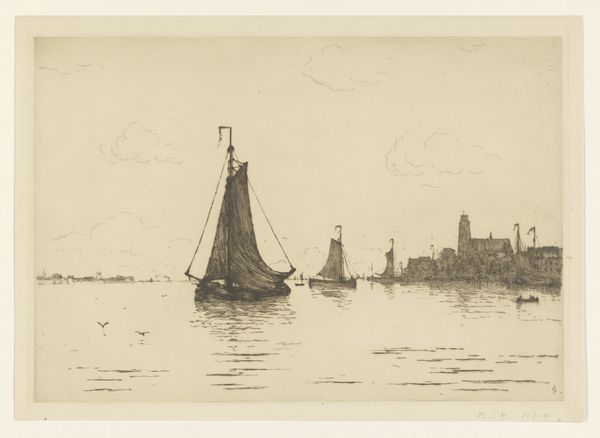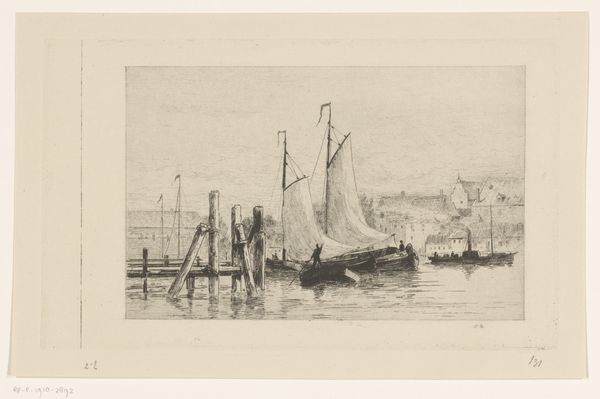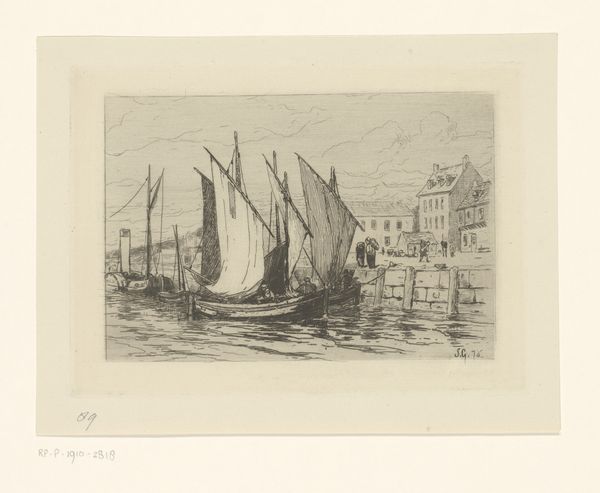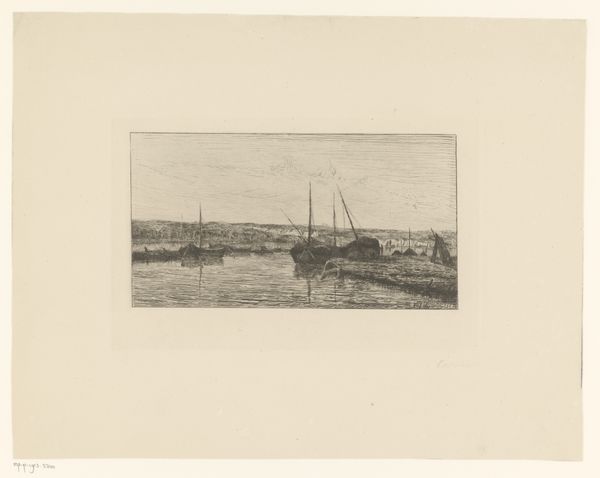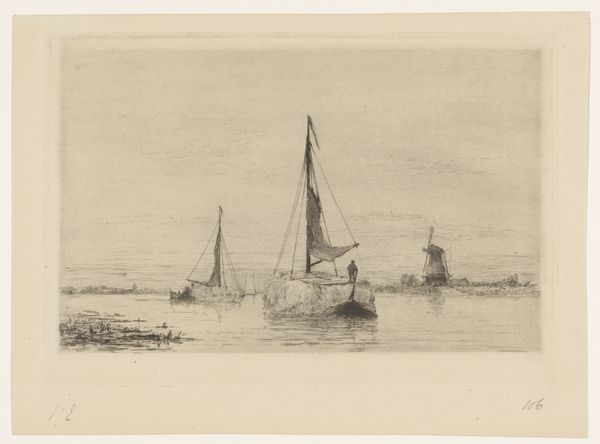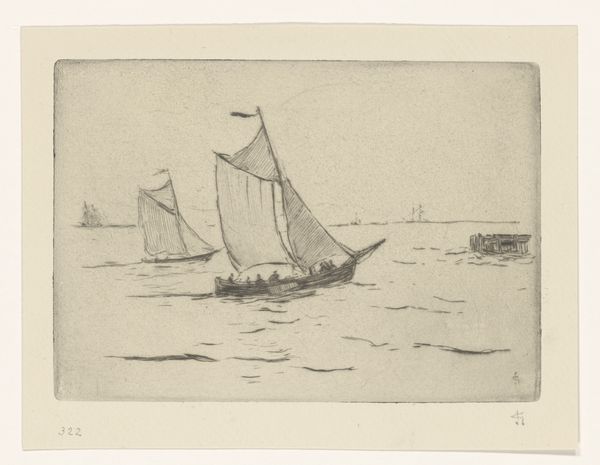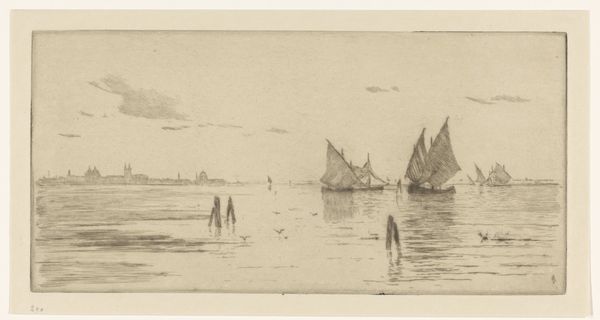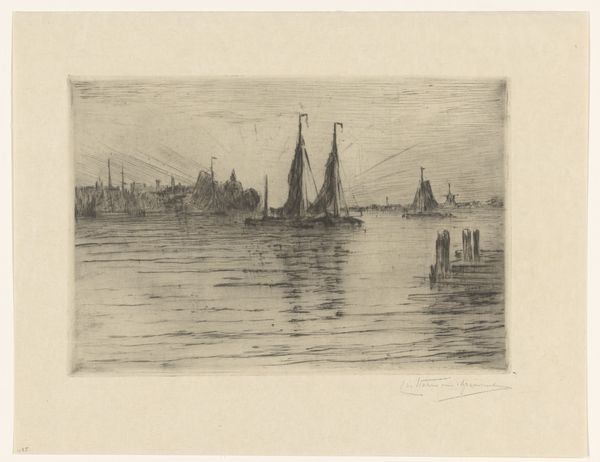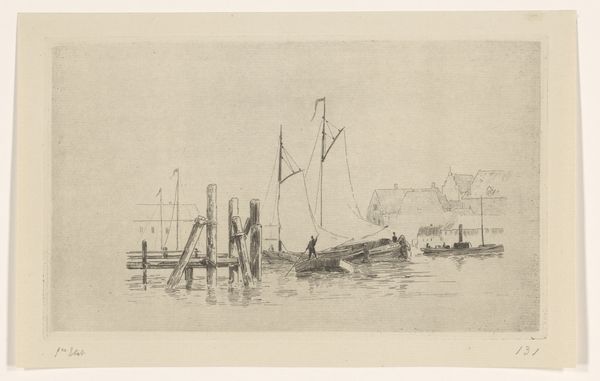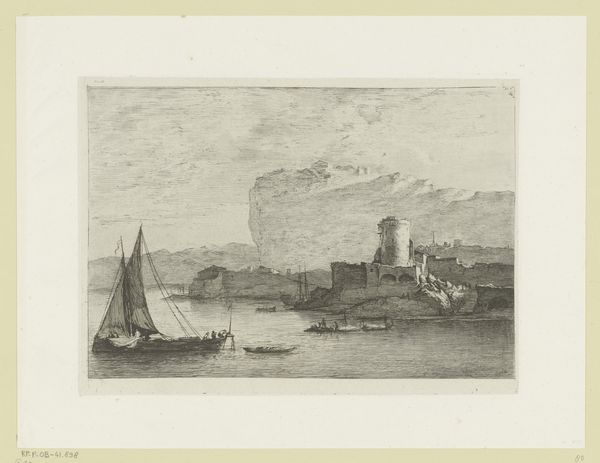
drawing, pencil
#
drawing
#
impressionism
#
landscape
#
pencil
#
cityscape
Dimensions: height 110 mm, width 165 mm
Copyright: Rijks Museum: Open Domain
Curator: Today we are looking at Carel Nicolaas Storm van 's-Gravesande's 1872 pencil drawing, "De haven van Honfleur," held at the Rijksmuseum. Editor: My first impression is one of hazy quietude. The soft graphite lines render the scene in muted tones, giving it an almost dreamlike quality. There is a wonderful stillness about it, despite the depiction of what would have been a working port. Curator: It’s fascinating to consider how drawings like this served as vital modes of documentation and even proto-photography, capturing not only the likeness of a place, but also something of its atmosphere, or its social fabric. How does this drawing speak to the changing economy of maritime craft? Editor: Water, boats, and buildings coalesce, don’t they, into potent symbols of maritime identity, of cultural exchange. Consider the ship itself - a literal vessel of cultural and economic traffic; what would each of these shapes evoke in the collective memory of its contemporary viewers? Curator: The Impressionist technique here—the suggestive lines and the focus on light—shifts our attention away from rigid representation and towards capturing a more subjective experience of place, but that style also speaks to new technologies enabling production; graphite pencils of standardized quality facilitating rapid sketching for larger audiences of print reproductions and so on… Editor: Indeed, even the very act of drawing the harbor seems almost ceremonial. Each pencil stroke memorializes an older order, hinting at a romanticized vision that elides labor… And those architectural masses are incredibly expressive as well: containers, perhaps, for the aspirations and collective spirit of the local population? Curator: That's well-put, though I must highlight how van 's-Gravesande’s material choices helped create wider appeal: a relatively inexpensive medium accessible to more than just the elites. Here’s how a modern vision gets sketched within emerging economies of artistic expression. Editor: Ultimately, for me, this artwork is about the persistence of certain archetypal longings—for journey, for homecoming, for the serenity found in familiar harbors. What a poignant contrast with our contemporary age of perpetual transit and placelessness! Curator: A compelling view indeed. It certainly reveals a fascinating intersection between individual artistic process and the broader material realities of the time.
Comments
No comments
Be the first to comment and join the conversation on the ultimate creative platform.
